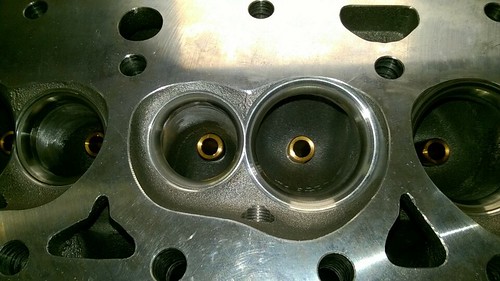Also, Hb PS4 peak formation on the anterior edge of the Kr area (and not the posterior) suggests that Hb  is a co-element, and as a result that Kr activation takes place at higher Hb concentration (h2 condition Fig. 2, best, cyan). This movement can be stabilized with the Kr twin system, in which Kr is activated by the constant-condition Bcd profile (k18 parameter), relatively than with the dynamic Hb. Kr twin (dual activation-inhibition by Kr of hb, basic inhibition of Kr by Hb) for that reason gives the ideal match to the info and is employed for the major Staurosporine chemical information conclusions of this paper.
is a co-element, and as a result that Kr activation takes place at higher Hb concentration (h2 condition Fig. 2, best, cyan). This movement can be stabilized with the Kr twin system, in which Kr is activated by the constant-condition Bcd profile (k18 parameter), relatively than with the dynamic Hb. Kr twin (dual activation-inhibition by Kr of hb, basic inhibition of Kr by Hb) for that reason gives the ideal match to the info and is employed for the major Staurosporine chemical information conclusions of this paper.
We used deterministic simulations of the Kr twin product to discover parameters (k values, Fig. 2) matching experimental info on positions (binding constants) and expression intensities (transcription rate constants). Bcd-dependent hb expression parameters had been unaltered from [37]. New info was utilized to established the Kr-dependent parameters, and to modify the Hb parameters. The Hb-dependent occasions in hb expression are revealed in Desk one (see also Fig. two). Binding is modelled as the response amongst a Hb TF (H) and a Hb BS (hx). For the Bcd-Hb model in [37] (without having Kr), these binding constants were set by matching the WT Hb boundary position of 47%EL (30 minutes into NC14, knowledge from [23]). Since we are now modelling Kr regulation of more mature sample, the Hb binding constants had been reduced to match the Hb boundary place of forty four%EL reported for Kr- [59], 40 minutes into NC14: k1 = 2.2e6 k3 = three.4e8 (M-1s-one, see Computations part underneath regarding models). (Optimistic self-outcomes had been modelled as in [37] (see also [39]) damaging self-outcomes [forty three,19] would not change the conclusions with regards to Kr regulation.) All unbinding costs in the model (e.g k2, k4) have been set to unity, therefore the binding costs are relative. It was described in [59] that Kr- expression depth is 50 % that of WT. Therefore, transcription prices dependent on Hb occupancy (h1 or h2 states), in the absence of Kr (kr0 point out), were also diminished from [37]: k5 = 5e9, k6 = four.5e10.
Due to the inverse partnership of sound with focus (in basic, the increased the focus the decrease the relative noise), focus stages are hugely pertinent in stochastic modelling. Correspondingly, qualitatively different noise conduct in experiments can be used to refine estimates of in vivo concentration ranges. Concentration estimates in the segmentation method ended up initially created for Bcd, ranging from maximal Bcd protein of about one thousand molecules/nucleus [sixty two], to about 7000 molecules for each nucleus (with encompassing cytoplasm) [63], to18339876 about 20,000 molecules/nucleus [sixty four]. Perform in [62] indicated that Bcd and Hb have similar protein concentrations. Current mRNA outcomes provide a much more immediate quantitation of hb stages. Boettiger reported anterior concentrations of 30000 copies for each nucleus (2011 Drosophila Meeting plenary). This was just lately reported [19] at about 300 copies per nucleus and surrounding cytoplasm (cylinders of 12m depth x 5m diameter) in NC13 (corroborated in dwell embryos [twenty]) up to 600 copies in early NC14 and dropping to 30000 copies anterior of PS4 in mid-NC14. One more current single molecule FISH study indicated NC13 amounts of 200300 hb mRNA per nucleus+cytoplasm (for all depths, 100/nucleus in the nuclear layer Heng Xu and Ido Golding, individual conversation). This is similar to the 100 mRNA copies for every mobile discovered for HOX genes later on in segmentation [sixty five]. Computational preliminary situations, for t = at the onset of NC14, correspond to the experimental values for the finish of NC13. For the nuclear layer (computational models of (5m)3 symbolize a nucleus plus neighbouring cytoplasm), preliminary maximal hb mRNA was 100 copies for each nucleus (+ cytoplasm). This rose to 140 copies by mid-NC14.